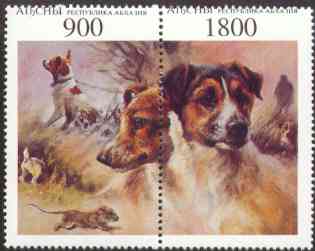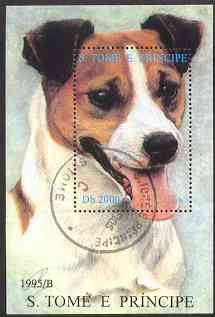|
|
Stamp of working Jack
Russells __________________ Below is a list of mistakes commonly made in the field. __________________ 1. Not having a working locator collar on your dog and a working box in your hand. The battery case of your deben locator collar should be well-taped with vinyl electrical tape to keep out dirt and water. The collar and box should be checked every time a dog goes to ground to make sure the equipment works. NEVER use zinc-air hearing aid batteries -- they will not work long in a deben collar as there is no air after the battery cap is put on! 2. Not having a full set of digging tools with you, including a shovel, bar, digging spoon or mattock. If you cannot dig, you will eventually be a witness to tragedy. 3. Allowing a dog to enter undiggable areas: stone cliffs and rock dens, hardpacked stable floors, holes under concrete slab foundations, etc. 4. Talking loud while the dog is working and/or allowing other dogs to bark, growl and lunge near the den. Noisy dogs and noisy people need to be moved one field over from where the work is being done. Most people will be quiet if told why before you get to the hole: use hand signals and everyone else will follow on. The louder you and the other dogs are outside the hole, the less likely the quarry will be to bolt. Try for the bolt before you rush to dig. 5. Not having a cell phone and being able to describe your location. Your car beaks down, you slash your leg quite deeply with a machete, your hunting partner has a heart attack, you break your leg in a fall. Your phone is your safety lifeline, but it does not do much good if you do not know where you are and can describe it with some accuracy. 6. Not having an ID on your locator collar and a tattoo or chip on your dog. If your dog goes missing, you should not have an immediate heart attack because there is no phone number or ID on your dog. A slide tag on a deben collar works well, as does an indelible pen on the leather. A phone number can also be scratched on to the battery cap. 7. Having too many loose dogs in the field. The occasion to go on a hunt is not a reason for any one person to bring along a kennel of dogs. No one can keep track of more than two dogs in the field -- please do not bring any more unless they are absolute command-and-control animals that operate with military precision to voice and hand signals. The more dogs in a field the higher the chance of tragedy -- a lost dog, a dog fight, a dog caught in a hole, more than one dog entering a sette at a time, etc. 8. Not carrying the tools or offering to help dig. You do not have to be a huge person to carry a posthole digger, to tie out the dogs, to scoop away the dirt, or to find the flashlight. I have never met anyone in the field so incapacitated by infirmity that they could not use a shovel or a posthole digger for at least a few minutes. If you are with a hunt judge, expect to do ALL your own digging to get a certificate. 9. Not digging a big enough hole right at the beginning. A hole should be as wide at the top as it will be deep, and the hole should be dug with vertical sides. Note: A hole need not be round -- a trench a little wider than a spade blade, cutting across the den pipe location, is most likely to locate the pipe and is also the easiest to dig. As you get deeper (past 4 or five feet) you will have to cut "shoulders" into your hole to use as a digging platform for the next depth, so past 5 feet the hole needs to account for these. A too small hole is very difficult to enlarge after you have broken into the den, as the dirt can slip back down into the pipe and suffocate the dog. A small hole into the den pipe is difficult for a "pull" dog to work. You will never wish you had dug a smaller hole, but you will often wish you had dug a larger one. 10. Putting two dogs to ground in a sette. This is a common mistake that often leads to wounds, either inflicted by one dog on another, or by the quarry as the rear dog pushes the first dog into the prey's snapping teeth. "Bottling" quarry front and back is to be avoided too -- it is entirely unnecessary and results in the quarry fighting a dog head to head. In addition, there is usually not enough oxygen for three animals in a sette. 11. Allowing a dog to enter a sette at the bottom of a steep hill. A dog can enter 15 feet into a den and be 20 feet underground -- too deep to locate or dig. As a general rule, try to avoid steep banks unless you are a seasoned digger with help who is eager for a story to tell. 12. Working a dog next to a power line or electrical fence. Deben collars and boxes either do not work at all, or do not work reliably, right under major power lines and right along electrical fences. Assume you are working a sette without a collar in such conditions. If you don't know how to do that, don't dig in these locations. 13. Allowing a dog to enter a sette occupied by a skunk or porcupine. Smell holes for skunk odor before releasing your dog into the sette. (Note: in December through February stale "skunky" smells may come from a fox sette, but this is the smell of a fox den, not a skunk). If you are in porcupine country, look for gnaw marks on surrounding trees and shrubs . Know what to do when your dog meets either of these problem creatures, and get animals that have had serious encounters with either animal to a vet. See page on skunks under quarry section. A dog sprayed by a skunk underground can die due to the chemical in the skunk's spray bursting the dog's red blood cells; the dog can die of anemia if not gotten out in rapid order. For porcupines, snip the protruding part of the quill off to deflate it and make it easier to remove. 14. Not prepared for weather - for either yourself or your dog. In hot weather your dog will need water, and so will you. In cold weather you should have a space blanket and a sweater for the dog. Be particularly careful to keep your dogs warm on very cold days (under 20 degrees), as a dog coming out of the warm ground into the bitter cold can go into shock when the cold air hits its lungs. Carry a portable solid-fuel pocket heater to bring your dog's temperature up after it comes out of a hole and is bundled up and dried off. 15. Don't work other people's hunting grounds. If someone allows you to come to a farm where they have secured hunting rights, they own those rights. Do NOT go to that property to hunt alone or with others. Hunting rights are not group rights and they are not to be poached by people unwilling to secure their own territories. 16. Dispatch quickly and humanely. If an animal has to be dispatched (it often does not), then do so quickly and humanely with a powerful blow to the head, a shot to the brain, or a knife to the heart/neck vertebra. Do not allow your dog to rag quarry to death -- it is a sickening thing and debases not only the person that allows it, but all working terrier enthusiasts. 17. Obedience first. If your dog is going to "run for the hills" when taken off leash, do not go hunting at all. Spend your time instead on basic obedience. Hunting should never be an exercise in dog chasing. 18. New and young dogs should not be tossed into a den pipe at the end of a dig. Dogs should move from mice and rats up to groundhogs and then fox or raccoon in an orderly process. Having a young and totally inexperienced terrier enter a den pipe at the end of a dig when a groundhog is cornered and very agitated may result in a dog "jibing" or turning away from hunting. Your dog's experience should be gained over time, not made in a day. 19. Bring a medical bag with you in the truck. This bag should contain clean bottled water to flush out eyes and wounds,antibiotics (see page), anti-biotic cream, a muzzle, and vet wrap. If your dog is wounded, dose it as quickly as possible with Cephelaxen, Clavamox, Baytril or some other broad-spectrum antibiotic that will treat both regular infections and staph infections. 20. Do not allow a vet to stitch a wound completely shut. Veterinarians rarely deal with wounds inflicted by wild animals. Do not allow an inexperienced vet to stitch tight a laceration or puncture. Puncture wounds should not be stitched at all, and lacerations should simply be closed with a drain hole to allow for seepage. For more information, see health care in the field.
Jack
Russell Stamp, St. Thomas E. Principe |

